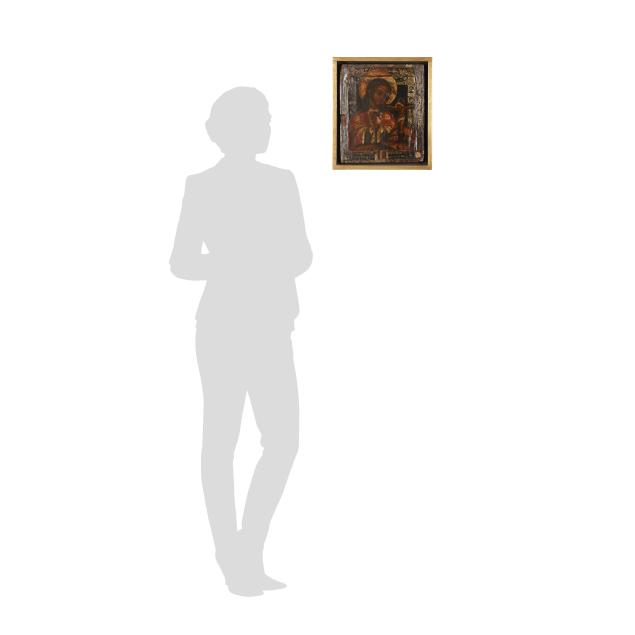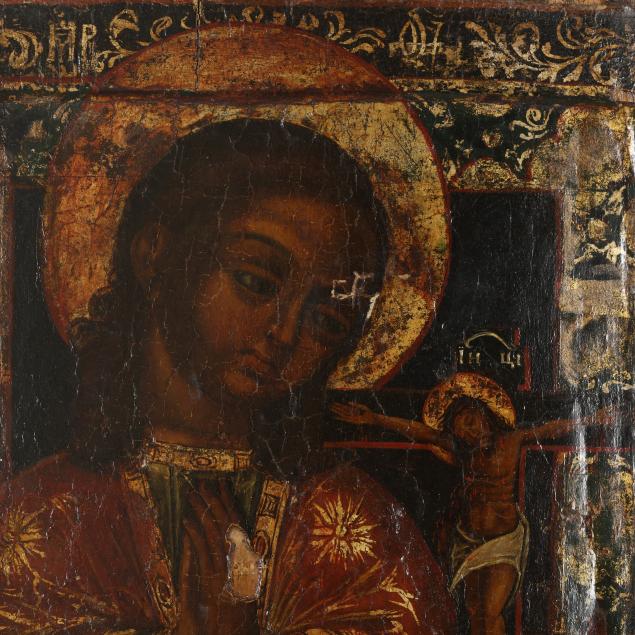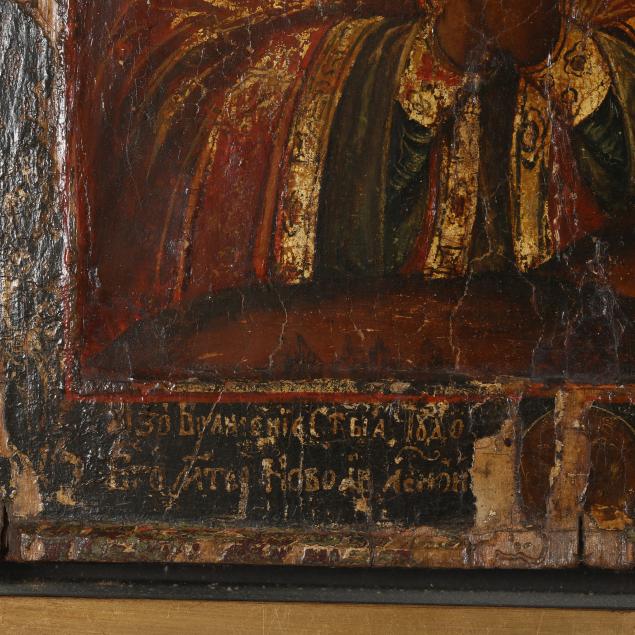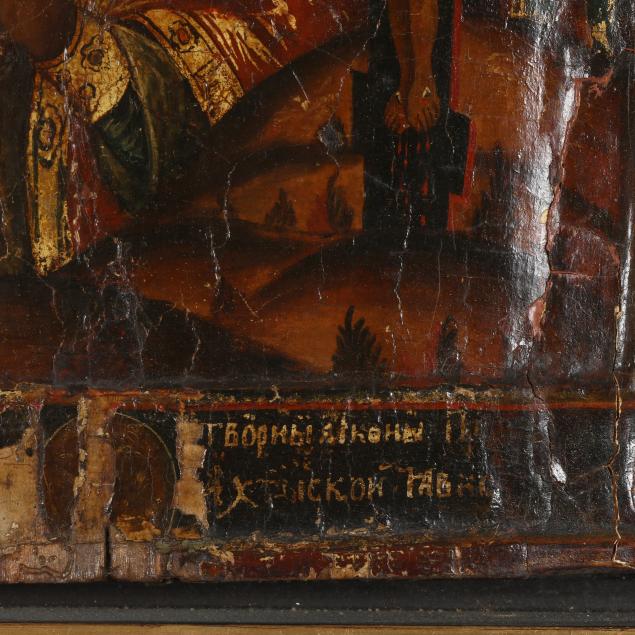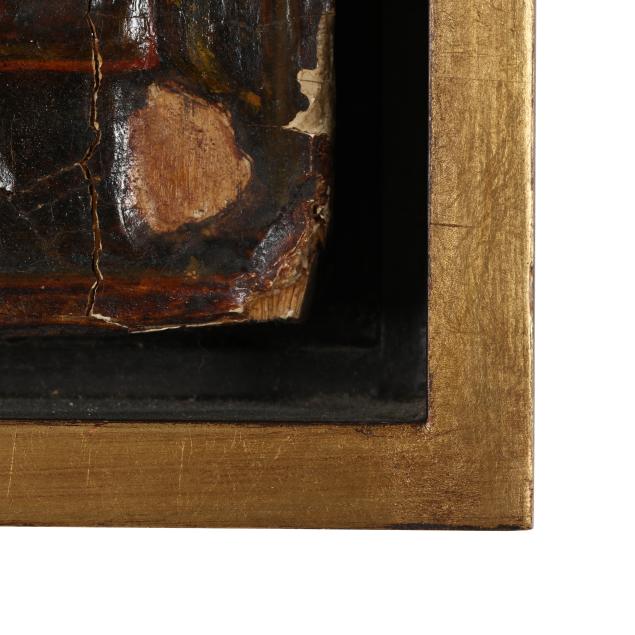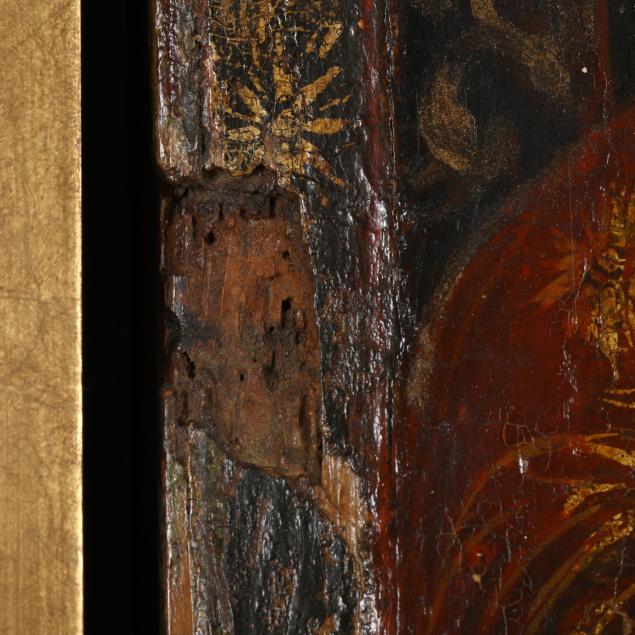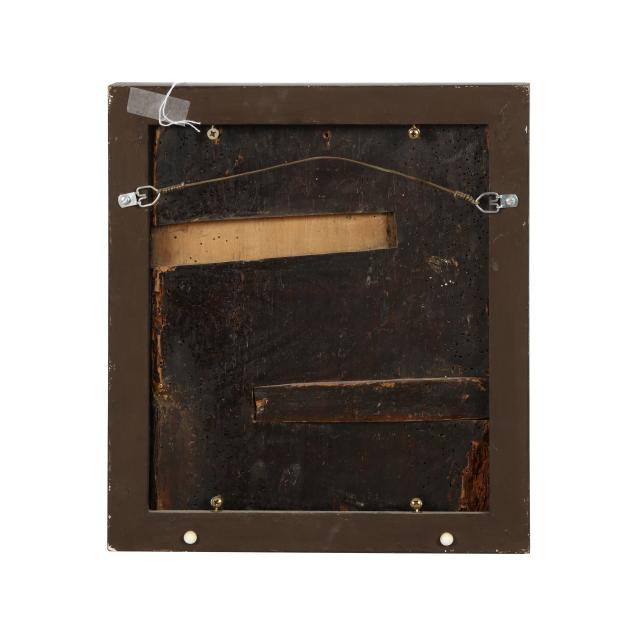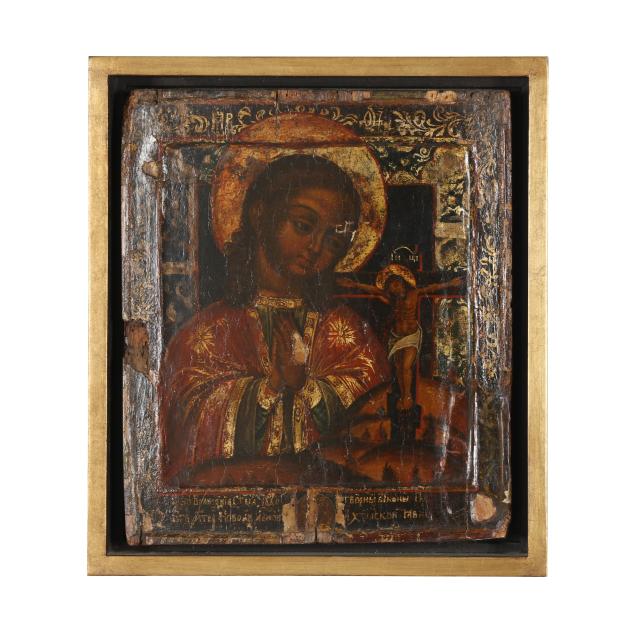
Lot 5066
Antique Eastern Orthodox Icon, Akhtuirskaya Mother of God
Explore more items like this one.
Visit our Fine Art Department Fine Art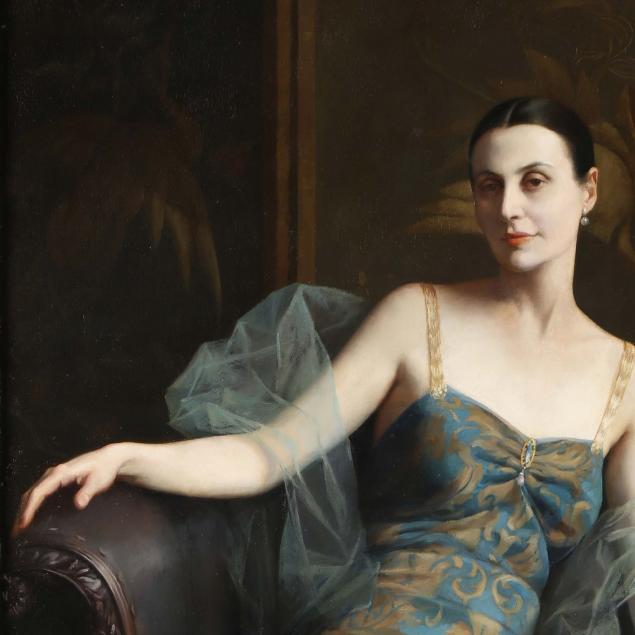
Lot Details & Additional Photographs
Panel 12 x 10 1/2 in.; frame dimensions 13 5/8 x 12 1/4 x 2 in.
Private Collection Durham, North Carolina, previously Krakow, Poland
Found in homes as well as churches, icons are sacred objects within the Eastern Orthodox Christian tradition that illustrate scripture and remain important visual and spiritual window of the orthodox religion. The origins of the painted icon can be seen in examples from ancient Greece, Egypt and Rome. Elements were adopted and incorporated into the hand-painted panels of the Christian Orthodox traditions that we recognize as part of Slavic iconography in Russia and other areas of Eastern Europe.
The icon of the Mother of God Akhtyrskaya (Mother of God of Akhtyr) shows the Theotokos contemplating the crucifixion of Her Divine Son. It first appeared on July 2, 1739 in the village of Akhtyr in the area of Kharkov, east of Kiev, when Father Vasiliy Danilov went out to a field by the church and noticed an icon of the Mother of God shining with a radiant light. Years later it would serve work healing miracles, the first being Father Danilov's own daughter of malaria. Notice that icons of the Akhtuirskaya (Akhtyrskaya) have a more Westernized representation of Mary than the more traditional Byzantine Marian icons.
Scattered areas of paint loss; some old insect damage; the reverse missing one inset cradle brace.
